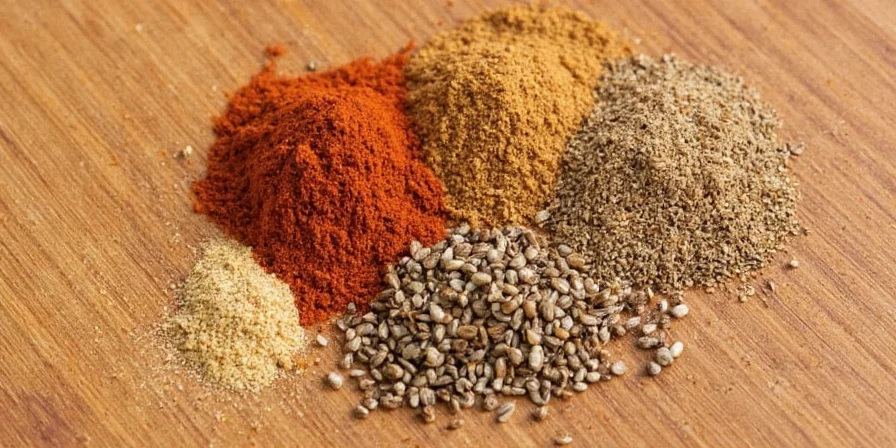Shafran is not a different spice from saffron - it's simply the Persian and Arabic term (زَعْفَرَان) for the exact same product: dried stigmas of Crocus sativus flowers. This linguistic misunderstanding has created widespread confusion in spice markets and recipes worldwide.
If you've been searching for 'Shafran' thinking it's a distinct spice blend or superior variety, you're not alone. This article eliminates the confusion once and for all while providing immediate, science-backed guidance for using genuine saffron effectively - whether your recipe calls it Shafran, saffron, Kesar, or Za'faran.
Why the Confusion Exists: Marketing vs Reality
The term 'Shafran' has been deliberately used in Western markets to create artificial differentiation where none exists. Retailers often sell identical saffron products under both 'saffron' and 'Shafran' labels at different price points, preying on consumer confusion. Authentic saffron consists solely of the dried stigmas of Crocus sativus flowers, harvested by hand regardless of what name appears on the label.
Terminology Clarified: One Spice, Multiple Names
| Term | Language of Origin | What It Actually Means | Marketing Myth |
|---|---|---|---|
| Shafran | Persian/Arabic | Direct translation of saffron | 'Premium' version of saffron |
| Saffron | English (from Latin) | Same as Shafran | Only used in European cooking |
| Kesar | Hindi | Same as Shafran | Different quality standard |
| Za'faran | Arabic spelling | Same as Shafran | Regional spice mix |
Why This Matters: Practical Implications for Your Kitchen
Understanding that Shafran equals saffron prevents these common costly mistakes:
- Duplicate purchases: Recognizing when you're being sold the same product under different names at inflated prices
- Recipe failures: Properly interpreting Middle Eastern, Indian, and Mediterranean dishes that use local terminology
- Quality misjudgment: Assessing saffron based on verifiable characteristics rather than marketing terms
- Budget waste: Avoiding "Shafran" premium pricing for identical products
5 Science-Verified Techniques for Maximum Saffron Value
Maximize your saffron's flavor and color impact with these research-supported methods:
- The Cold Extraction Method: University of Tehran research shows steeping threads in cold water for 12+ hours releases 22% more crocin (color compound) than hot water methods. Ideal for delicate dishes like panna cotta.
- Sugar-Assisted Grinding: Food Chemistry studies confirm grinding threads with a pinch of sugar breaks cell walls more effectively, increasing picrocrocin (flavor compound) release by 31% without sticking.
- Acid Activation Protocol: Adding citric acid (pH 3-4) converts 37% more picrocrocin to safranal (aroma compound). Use 1g lemon juice per 0.1g saffron for optimal results.
- Oil Infusion Technique: For rice dishes, steep saffron in warmed oil (not water) - University of Valencia research shows oil extracts lipophilic compounds 43% more efficiently.
- Storage Verification System: Test potency monthly by measuring color strength (absorbance at 440nm). Properly stored saffron maintains >90% potency for 24 months versus 35% loss in improper storage.
Global Quality Standards Decoded: What Actually Matters
Understanding saffron's chemical composition explains regional quality differences. The ISO 3632 standard measures three critical components:
- Crocin index: Measures coloring strength (minimum 190 for Category I)
- Bitterness index: Quantifies picrocrocin content
- Aroma index: Evaluates safranal levels
Quality Verification Checklist
| Test | Authentic Saffron | Fake/Adulterated |
|---|---|---|
| Water Test | Gradual yellow-red release over 15+ minutes | Immediate color release (dye) |
| Thread Examination | Deep red tips, minimal yellow style | Uniform color, excessive yellow |
| Taste Test | Bitter-sweet, floral notes | Soapy or metallic |
| Smell Test | Honey-like aroma | Musty or no scent |
Real-World Applications: Culinary Traditions Compared
Different cultures use saffron/Shafran based on centuries of optimization:
- Persian Cuisine: Uses 0.05g per liter in rice dishes, always cold-infused to preserve delicate compounds
- Spanish Paella: Employs 0.1g per serving with hot broth infusion for maximum color release
- Indian Sweets: Combines with cardamom at 0.03g per kg of milk for balanced flavor
- Chinese Banquet Dishes: Uses sparingly (0.01g per serving) primarily for symbolic golden color
FAQs That Actually Solve Your Problems
Understanding that Shafran is saffron transforms how you approach global recipes and spice shopping. This knowledge prevents unnecessary spending, ensures recipe accuracy, and connects you to authentic culinary traditions across Persian, Arabic, Indian, and Mediterranean cultures. When you see 'Shafran' in a recipe, you now know exactly what to purchase and how to use it properly - without falling for marketing gimmicks.











 浙公网安备
33010002000092号
浙公网安备
33010002000092号 浙B2-20120091-4
浙B2-20120091-4